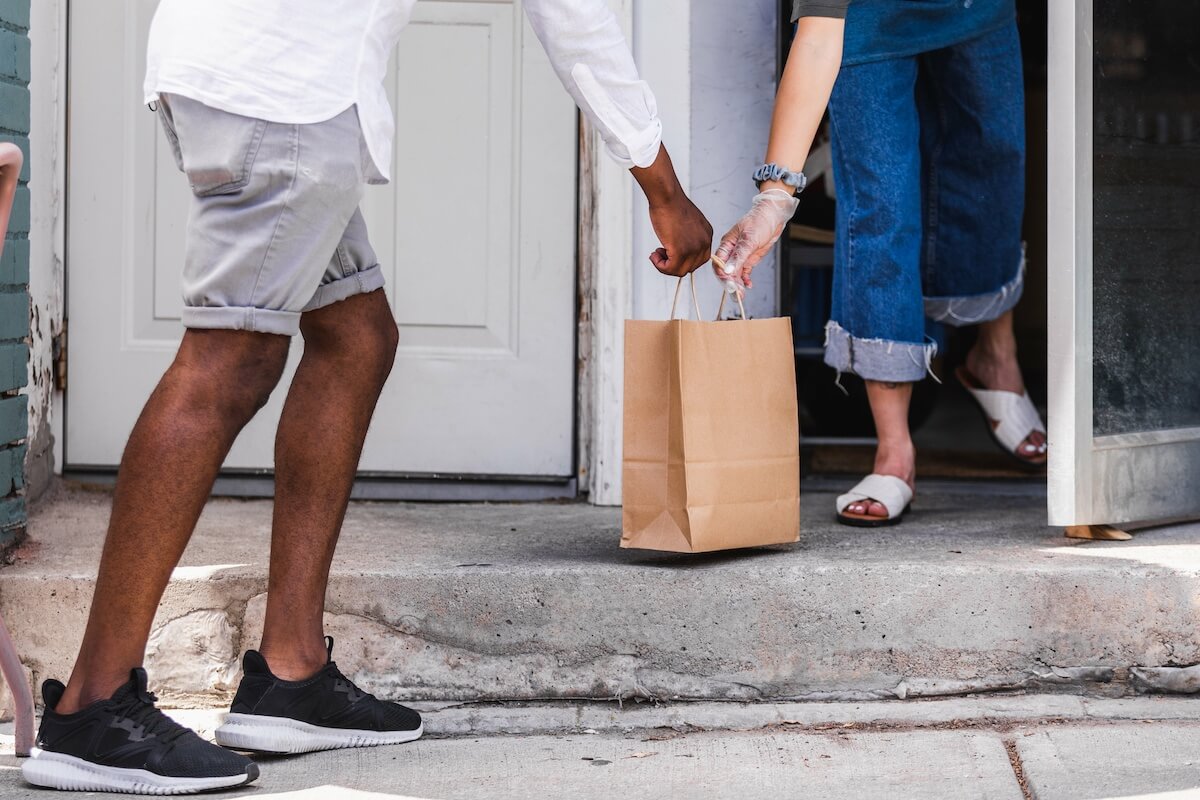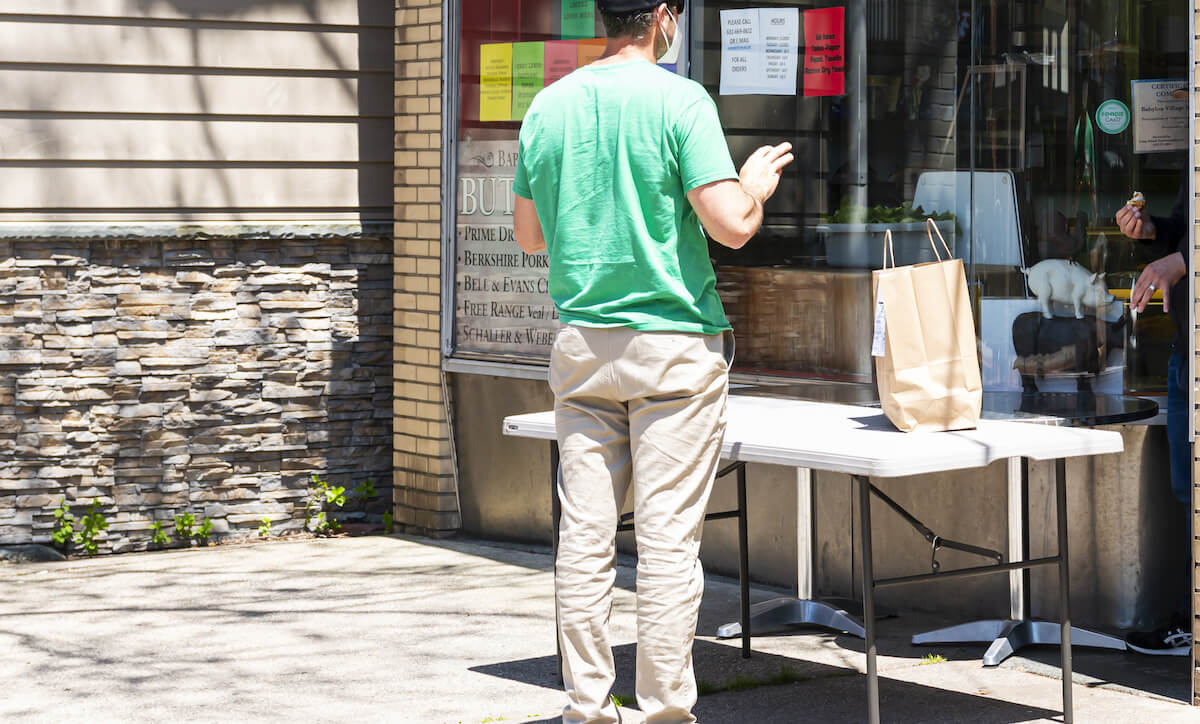How to strategically plan your restaurant’s curbside pickup
Curbside pickup food has always been popular—forever, really, as takeout food has existed since the dawn of restaurants. However, it’s arguably more important than ever before, especially in the wake of the coronavirus. People’s habits have changed, and takeout is the new normal.
So, if you’re running restaurant curbside pickup, know that there are a few crucial facts about the industry: People’s habits regarding dining have changed, more people are eating at home rather than choosing dine-in options, and this trend is likely to stick around.
Restaurants have to compete with delivery services like Uber Eats, Doordash, Grubhub, and more, and have to make it worth a customer’s time and effort to visit the establishment to collect their food themselves.
If you’re offering curbside pickup—and really, most restaurants should at least consider doing so these days—you’ll have to figure out the best way to do it. Fear not: We’re here to help with this situation and bring you the best options and solutions for curbside service.
Curbside pickup basics

While the concept of curbside pickup may seem new, there’s nothing new about it at all—it’s just another form of takeout. The only notable difference between takeout and curbside pickup is that the curbside option doesn’t require a customer to walk inside the establishment, and the pickup location doesn’t have to be at the establishment at all. You can set your own pickup point based on what makes the most sense where you are, whether it’s a parking lot or directly in front of your establishment.
More than half of restaurant diners polled noted they used curbside pickup during the pandemic and many will continue to do so afterwards. The curbside option minimizes contact, and can even require no contact—something that’s been a hallmark of the whole COVID era. After the pandemic, customers need incentives to pick up food themselves rather than use third-party delivery options.
The incentives for the restaurant to offer curbside pickup are strong, considering how much third-party delivery fees can sting. A 15% commission on deliveries, like Doordash commands for example, can eat into profits—especially on low profit margin items. Want to know how to boost profits? Check our article here for in-depth analysis.
Sensitive customers may be aware of that profit margin cut and may voluntarily help their favorite restaurant out by making calls directly to the restaurant rather than order from a third party. However, that shouldn’t have to be their only incentive.
How to encourage customers to order curbside pickup

The logical question, then, is how to encourage customers to order carryout curbside pickup, bypassing third-party delivery options and helping restaurants improve their profit margins. This isn’t an issue for drive-thru restaurants or pizzerias, but is much more a concern for more traditional restaurants like steak houses, bistros, BBQ or cajun joints, Thai restaurants, and so on.
The simplest way to convince customers to order curbside service is to offer discounts or perks that cost you less than delivery fees would. For example, a simple 5–10% discount on curbside service could be enough to convince customers to come pick up their food rather than rely on delivery services.
Additionally, restaurants could offer perks like free ice cream, desserts, gift cards, or other similar options as an incentive. Many customers are aware that third party delivery services cost a restaurant a bundle, and if you’ve worked your way into customers’ hearts they’ll be happy to help—as long as there’s some give on your part.
Being fully curbside-ready

If you really want your restaurant to be operating on a modern basis, having your full menu available for online ordering is a must. Having a solid website and an online ordering option in addition to a call-in option will put you where you need to be—especially if you accept credit card orders online.
In addition to managing a website, invest time in your social media presence, like a robust Facebook page. Facebook has made it much easier over recent years for customers to find contact information for restaurants.
A restaurant should have the following information clearly available on their social media pages:
- Full menu
- Contact information
- Hours and location
- Delivery and pickup options
Furthermore, because diners won’t have access to the full dining room facilities, it’s important that the food’s presentation is as pretty as possible. In the realm of takeout, that means having packaging that looks professional and is environmentally conscious at the same time. Styrofoam, single-use plastics and the like make a restaurant look regressive. On the other hand, food that’s nicely packaged in recyclable, reusable, or biodegradable materials will give you a leg up in the takeout market—and will help you do your part to reduce waste, too.
Takeout orders aren’t going anywhere
Whatever your situation or type of eatery, knowing that takeout orders have grown in popularity and the trend is here to stay means that your establishment will need to be fully prepared for them. People’s habits have changed significantly over the past few years, and many people want to eat at home. While this trend clearly isn’t ideal for individual restaurants or the industry at large, there is a silver lining to this cloud.
Consider your seating capacity and then consider how takeout expands upon that: In effect, your seating capacity is limited only by your kitchen’s capacity.
Of course, if your establishment serves delivery-friendly food like pizza or fried chicken, you’re already well set up for such services. It may take a while for takeout brunch to become more popular, as brunch is more of an event than a meal itself, but that too will likely become more common.
If you’re an establishment that makes a considerable amount of money from alcoholic beverage sales, look to new laws established in many states that allow for off-premise sales. In that case, take-out bellinis may indeed be a valuable business model.
In addition to offering curbside service, offering free delivery—specifically curbside delivery—will help to maintain your profit margins and negate the need for third-party delivery options. Hiring drivers or assigning staff to delivery duty will indeed cost money, but it may end up being cheaper in the long run.
How can Yelp help?
We mentioned earlier that having a robust social media presence will help with online ordering, leading to more curbside sales. Yelp fits perfectly into that role: Customers can easily find restaurants on Yelp for curbside pickup orders.
If you’re ready to take your front of house (FOH) services to the next level, consider checking out Yelp’s FOH platform. Not only does it help restaurateurs accrue and analyze massive amounts of customer data, it can help streamline FOH operations and even take some burden off of FOH staff.
Want to see just how it can help? Reach out to us for a free demo and we’ll be thrilled to show you around. We want to see our friends in the restaurant industry not just survive, but thrive.